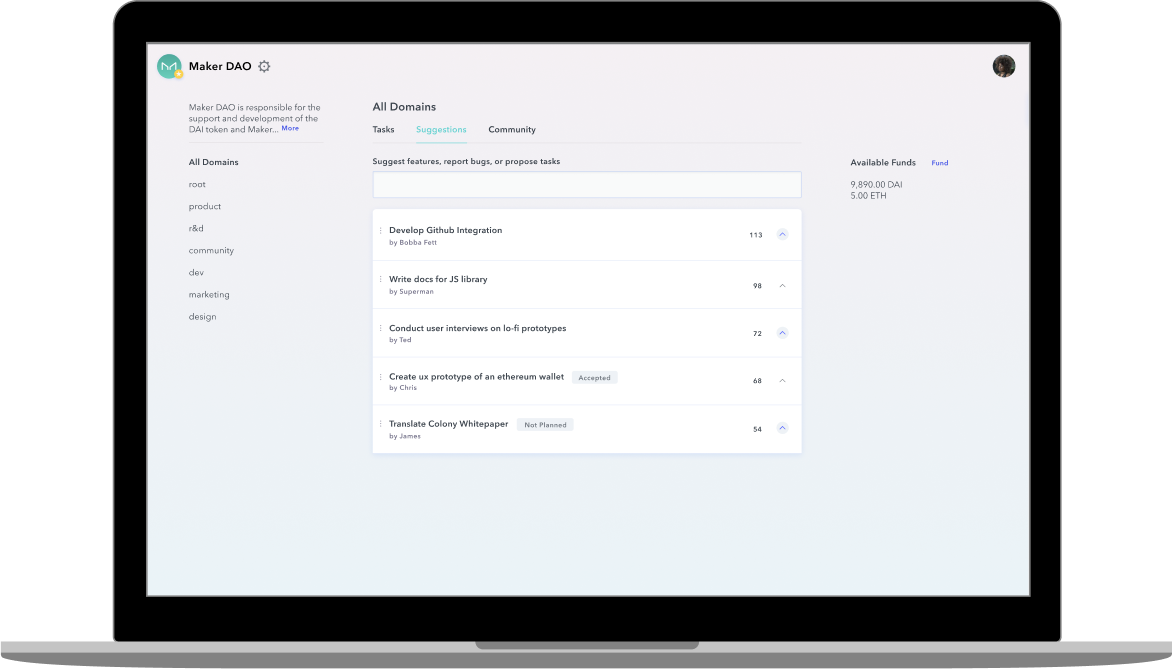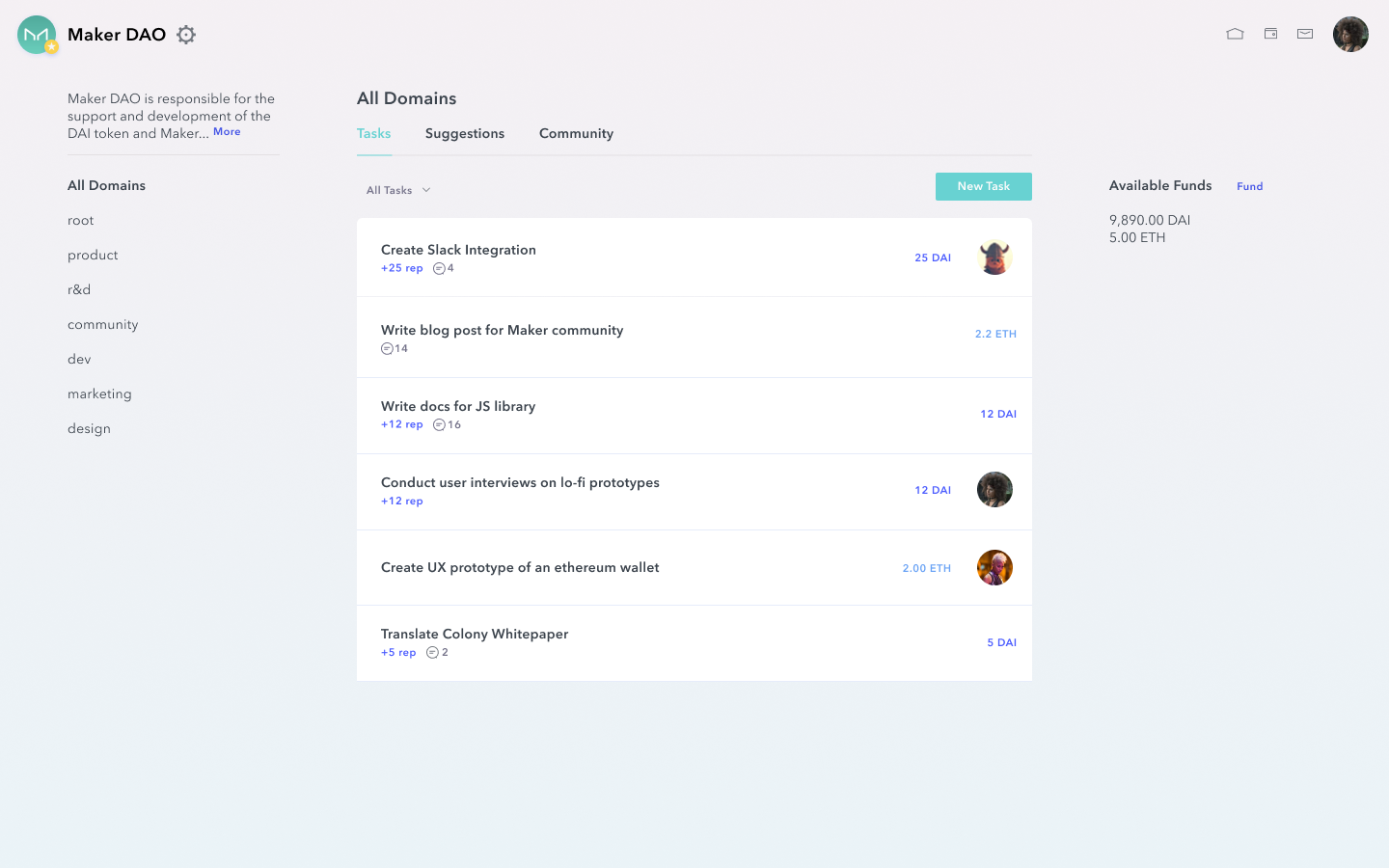Colony
End-to-End Product Designer at Colony, Jan. 2018 - Present
Product Vision
Work is changing. We are seeing the rise of freelance work, the gig economy, and self employment. We are seeing successful companies built with completely distributed teams. And we are seeing traditional organizations embrace open source philosophy. These trends will continue, creating opportunities for new tools and workflows to emerge in order to support this new paradigm.
Colony’s vision is to use emerging technologies to harness the power of this changing labor market. Colony envisions a future with a new type of organization, one that is open, self-organizing, meritocratic, and native to the web.
Key Projects
Gas Station
In order to make use of Colony’s web3 application, we designed a “gas station” that allows users to interact with blockchain technology.
Suggestions
A generative research project that resulted in a key product insight and new feature development.
Colony App
The Colony Web App is the first step for achieving this vision. The application enables Web3 projects to use blockchain technology to organize and incentivize open source work. This work includes developer issues, marketing initiatives, design projects, or any other type of work that supports their projects.
Target Users
Web3 projects and organizations represent the cutting edge of open work. They use blockchain technology, primarily the Ethereum blockchain, to build new decentralized tools and applications. Through user research and market validation we identified these projects as a good target market because:
They have robust communities that actively participate in the success of the project.
They are already paying and incentivizing their communities to do meaningful work.
They value open source work and transparency.
They understand blockchain technology.
Working closely with executive leadership, I lead user research and market validation to develop empathy and understand the user needs of our target market.
Colony Technology
Colony is built using the Ethereum blockchain. By developing a network of smart contracts, Colony makes use of blockchain infrastructure to enable organizations to coordinate work, manage money, and make decisions.
As a designer, I have worked with our developers to gain a deep understanding of this new technology in order to deliver new design patterns and effective user education.
Business Model
Our smart contracts are designed to payout workers when they complete a task on Colony. At this point, we collect a percentage of the payout as revenue. Or said another way, we get paid when work gets done.
As a designer it’s important to keep this in mind so that we prioritize and design features that increase engagement and ultimately help our users get work done.
Role + Process
As one of the two designers at Colony, it has been my role to lead and execute end-to-end product design to take our application from concept to launch. Below are key ways I contributed to the success of our design team:
Facilitated design sprints to navigate ambiguous challenges and develop new features.
Led user research to understand our market and user needs.
Created user personas and customer journey maps to build empathy for our users.
Translated design insights into new features and user flows (ux).
Ran usability tests with interactive prototypes to optimize workflows.
Used our design system to create high fidelity designs.
Collaborated with developers, facilitating hand offs and managing backlogs.
Worked with product to define features and priorities.
Presented to executive leadership to influence strategy.
Final Designs
Since joining Colony, we designed, developed, and launched the Colony Web App. It’s one of the first applications built on top of the emerging Ethereum blockchain. It’s attracted thousands of sign ups for our early access program, where we have begun to onboard select users. During this time, our product launch and strategy has helped raise 1.8 M in seed funding.
Below you can see some of the final designs that I worked on at Colony. These were designed and developed while taking into account user needs, technology constraints, and business strategy.
Login / Create New Wallet
Create A Colony
Find Tasks
Complete Task / Sign Transactions
Suggest a Task
Earn Reputation / Track Work
Colony Settings









